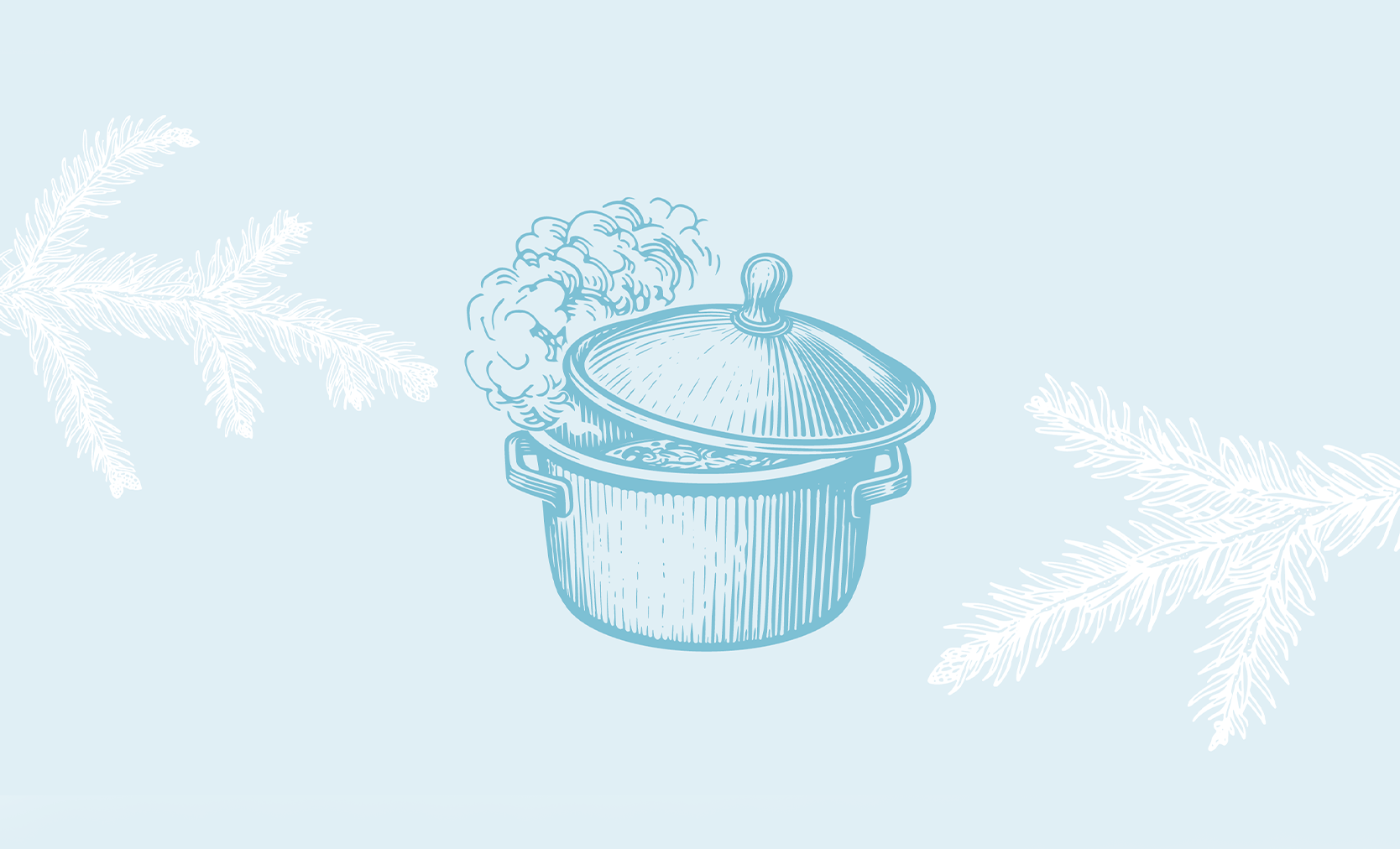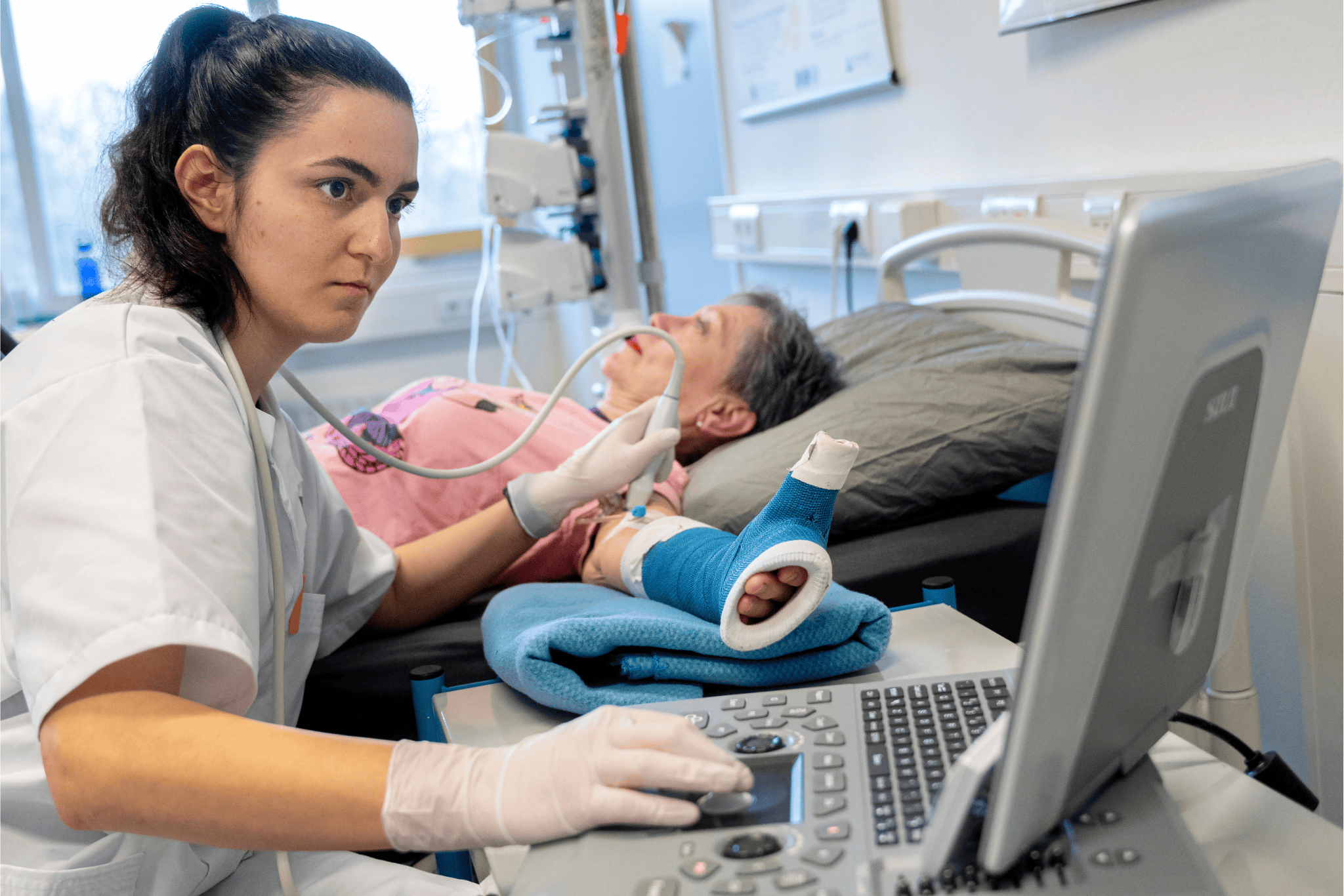Text Dominique Vrouwenvelder and Marieke Enter
Times change, and so do our eating habits. The Resource editors have been pondering the Christmas Dinner menu of the future: one based on recent Wageningen scientific research.
A quick test
The Christmas Dinner of the future doesn’t start at the table. Earlier in the day you’ll do a home test to check your metabolic profile and glucose levels. Eating in accordance with your personal metabolism makes you healthier, we learn from postdoc Anouk Gijbels’ PhD research. The form of ‘personalized nutrition’ that she studied improves our cardiometabolic health: i.e. that of our metabolic and cardiovascular systems.
Would your body benefit from a diet full of ‘good’ unsaturated fatty acids? Then you’ll be served an avocado salad, fatty fish and nuts. If you’re in the group that’s better off with a low-fat, high-fibre and protein-rich diet, your menu will include chicken breast with lots of vegetables and a low-fat dairy-based dressing.
[Fatty fish]
No eels, mind you. With a view to the future, the International Council for the Exploration of the Seas (ICES) recently advised a total ban on eel fishing. ‘Because it is not certain how resilient the current population is,’ says the Wageningen researcher and ICES workgroup member Tessa van der Hammen.
[Chicken breast]
For the poultry farmers of the future, Bram Bos and Ellen van Weeghel (Wageningen Livestock Research) have developed an alternative barn concept that stimulates natural behaviour while producing much lower emissions of ammonia and particulate matter. The crux of the design is a separate, sunken dust-bathhouse where much less dust is kicked up, plus a manure scraper that keeps the thick layer of substrate the chickens scratch in clean. Just Google ‘wellness for chickens’ and you’ll see how it works.
Slimming shot
The era of obesity medication has reached our Christmas Dinner, predicts the crystal ball of pharmacologist and professor of Nutritional Biology Renger Witkamp. The hormone semaglutide, which was developed as a diabetes drug, has recently proven to have a pleasing side effect: it helps people lose weight due to its effect on our hunger hormone, among other things.
The currently available substances with semaglutide are based on proteins. These are broken down by the enzymes in our digestive tract, so people have to inject themselves with them. But producers realize they could do good business with this drug, so product development is still ongoing. In a few years’ time, semaglutide products will no longer be ‘prescription only’ for people with diabetes or overweight. Anyone will be able to buy them at the local pharmacy. And there will be no need for a syringe; you’ll be able just to drink the product. A shot before sitting down to Christmas Dinner will prevent you from ending the evening collapsed on the sofa feeling stuffed and guilty.
Appropriate dish:
A shot of semaglutide
A side of happy bacteria
All that table-top grilling at Christmas Dinner was cancelled long ago. ‘We must nourish our guts and our gut bacteria,’ goes the latest advice, prompted by recent PhD graduate Marie-Luise Puhlman. If our gut bacteria don’t get enough fibre, they start consuming other things, like the mucus lining the gut or proteins from undigested food – and that’s not good news.
If your gut bacteria do get sufficient indigestible fibre, they produce substances that are good for your health. Fibre can boost our innate immune system. That’s what you want! That indigestible fibre comes from plant sources such as vegetables and grains, preferably from naturally high-fibre products. Powders and supplements are soooo 2024.
Appropriate dish:
High-fibre salad with chicory root
Mystery on the menu
One thing that definitely isn’t on the menu is Oosterschelde lobster – famous for its delicate flavour – from the Oosterschelde estuary. Since last year, that population has been diseased and dying off, while the same species in the Grevelingenmeer lake remains healthy. In its research into the causes of this, WMR has yet to find any bacteria, viruses or parasites that could explain the death rate. Nor did the researchers find raised levels of heavy metals, denting the theory that the culprit could be steel slag, a waste product of the steel industry that is used as ground and shoreline cover. WMR has submitted a proposal for follow-up research to the ministry, suggesting that mussel mortality in the Oosterschelde be studied as well, because that too peaks every couple of years, and is equally inexplicable.
[Lobster]
Research earlier this year by the University of Exeter and Wageningen Marine Research (WMR) showed that Oosterschelde lobsters form a genetically unique population. Fun fact: lobsters from Norway and Morocco are more closely related than Oosterschelde lobsters are to North Sea lobsters.
Appropriate dish:
The latest thing: water lentils – just as chic as Oosterschelde lobster.
Offshore mussel farming
Dutch mussels are a low-footprint choice: the CO2 footprint of mussels is six times lower than that of chicken and eight times lower than that of beef. With a view to increasing the production options, Wageningen Marine Research is currently doing research on offshore mussel cultivation. This is taking place in the Voordelta shallows off the coast, where there is space and a plentiful food supply. The mussels seem to thrive in the suspended farming system used, although those in faster flowing water at the surface grow more slowly than those at greater depths. Besides higher costs, there’s another downside to offshore mussel farming: ‘You can only harvest in calm weather, which doesn’t occur as often out at sea,’ researcher Jacob Capelle told broadcaster Omroep Zeeland.
[Mussel]
There are an additional 4000 hectares of mussel banks on the exposed sandbanks of the Wadden Sea. ‘And that is a cautious estimate. It seems as though the number of mussel banks has doubled,’ said Karin Troost on the Dutch news site nos.nl last week. Wageningen Marine Research is monitoring the development of mussel banks using satellite images. Not all new mussel banks survive: some get washed away or serve as food.
Appropriate dish:
Steamed mussels with fennel – a crop that is apparently fantastic for protecting your leaf vegetables from slugs, and which made its mark on the outcomes of the Wageningen CitizenScience project Moestuin Mix (Vegetable Garden Mix) this year.
Full circle
For those who don’t feel morally impelled to serve a fully plant-based Christmas Dinner, a little bit of meat or cheese at Christmas can be justifiable – at least, according to Imke de Boer, professor of Livestock & Sustainable Food Systems. In her examination of healthy and regenerative food systems, she found that animals play a key role because they make use of nutrients that would otherwise go to waste. They convert biomass that is unsuitable for human consumption (grass and waste streams) into high-quality food such as meat, eggs and dairy produce.
Meanwhile, they also provide other ecosystem services such as manure. De Boer’s philosophy is already being put into practice here and there. At Wroetende Varkens (Rootling Pigs) for example, a small pig farm in the Achterhoek in the east of the Netherlands, where the pigs are fed on waste from local supermarkets, bakeries and greengrocers. These pigs are not subjected to farrowing cages, docked tails and other aspects of the pork industry which have horrified people this year. They live up to their name by spending most of their time rootling – species-specific behaviour that is strongly associated with wellbeing.
Appropriate dish:
Any cut of meat from a rootling pig or a multipurpose cow (one that is used for both milk and meat). Because being economical with nutrients means that any animals killed for their meat should be eaten from top to tail.
Go bananas
Yelloway One? Sounds like an ambitious American space program. But no, it’s a research project on bananas, which are a striking example of the extreme monocultures in the global food system, and the threat they pose not just to biodiversity but also to humanity. More than half the bananas in the world are of the Cavendish variety. And that is precisely one that is not resistant to the soil fungus fusarium Tropical Race 4 (TR4) and the leaf disease Black Sigatoka. Entire plantations have succumbed to these diseases, resulting in damage to the tune of hundreds of millions of dollars.
This year has seen a breakthrough based on the advice of WUR professor of Phytopathology Gert Kema: a hybrid banana was successfully developed that is resistant to both fusarium Tropical Race 4 (TR4) and Black Sigatoka. This is crucial for the global food supply: in Africa in particular, bananas are just as important as rice, maize or grain in many people’s diet. Something to think about during Christmas Dinner. How did that LiveAid song go again?
[Chocolat]
Is your mouth already watering at the thought of those crispy chocolate chips? That could even happen after a copious dinner. Results published this year from the MSc thesis of PhD researcher Jiri Kaan (Health & Society) showed that chocolate makes your mouth water even when you’re no longer hankering after it.
Appropriate dish:
Homemade banana ice-cream with fairtrade chocolate chips

 Illustration Shutterstock
Illustration Shutterstock 

